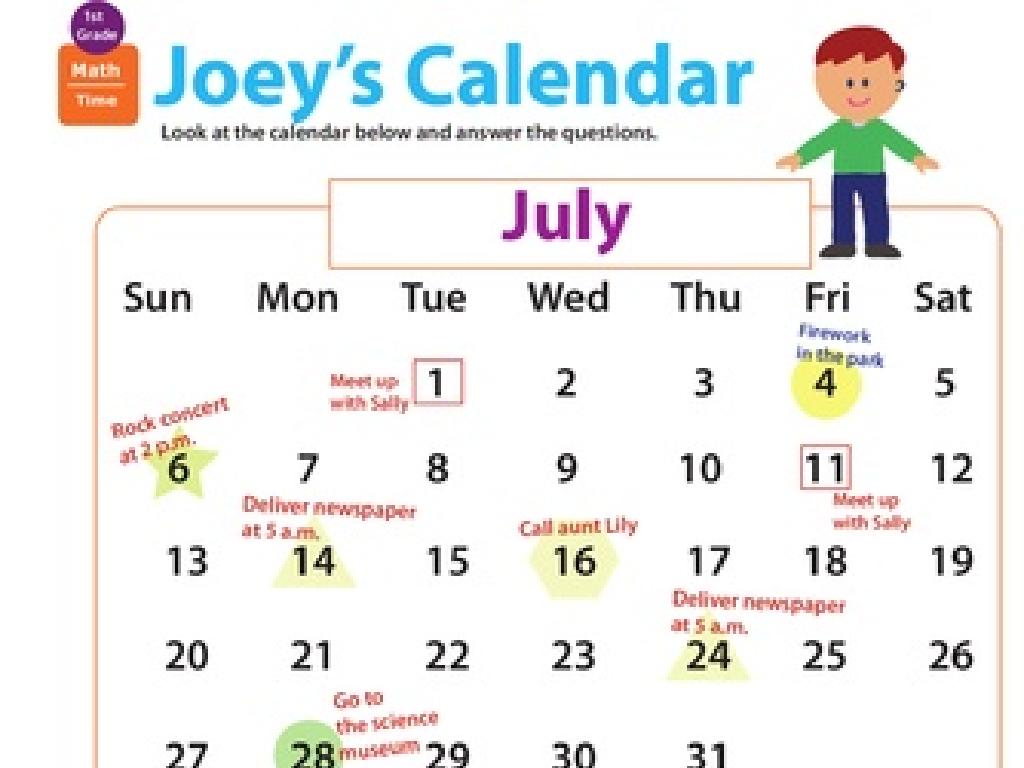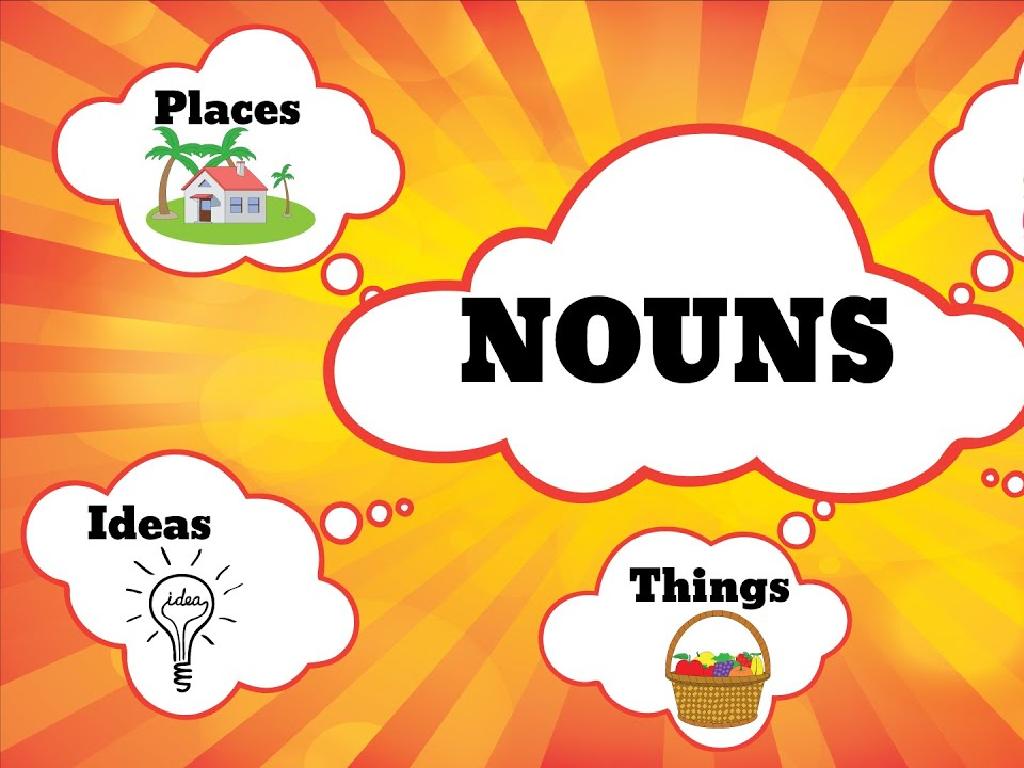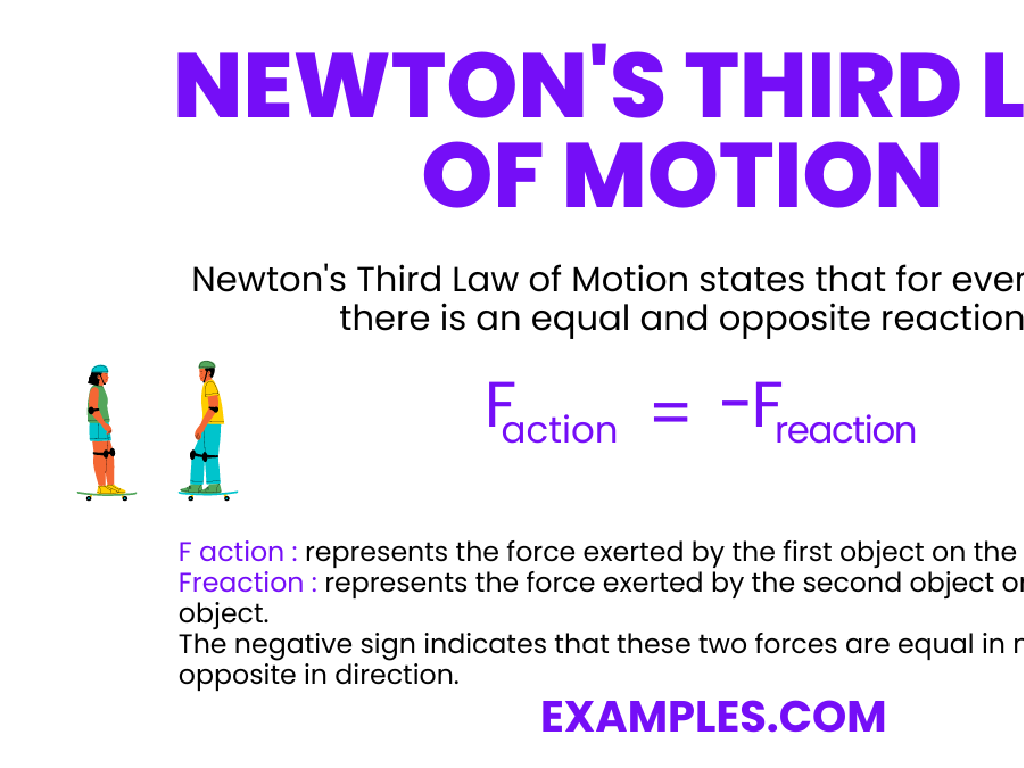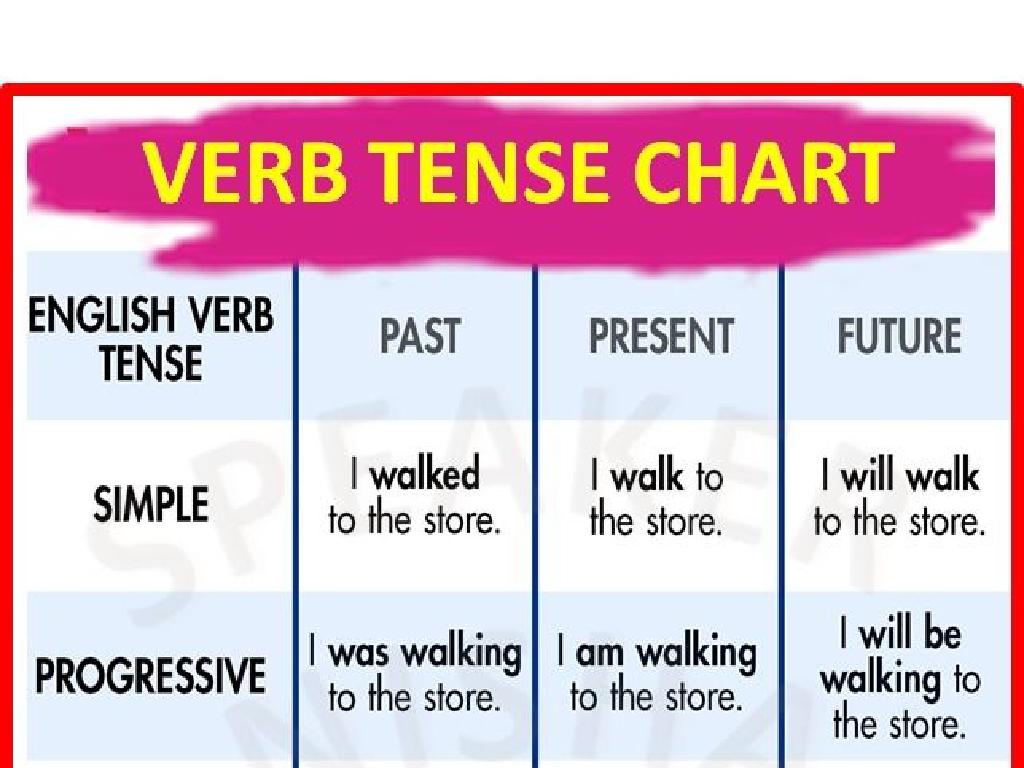Convert Decimals Between Standard And Expanded Form
Subject: Math
Grade: Fifth grade
Topic: Decimal Place Value
Please LOG IN to download the presentation. Access is available to registered users only.
View More Content
Converting Decimals: Standard to Expanded Form
– Grasping decimal fundamentals
– Today’s goal: Conversion mastery
– Steps to convert decimals
– Break down the number by place value, e.g., 3.14 = 3 + 0.1 + 0.04
– Significance of decimal conversion
– Understanding conversion strengthens number sense and aids in math operations
|
This slide introduces the concept of decimal place value and the process of converting decimals between standard and expanded form. Emphasize the importance of understanding decimals as they are used in everyday life, such as in money and measurements. Guide students through the steps of breaking down a decimal into its constituent parts, highlighting the value of each digit according to its place. Explain that mastering this skill is crucial for performing more complex mathematical operations and developing a strong foundation in number sense. Provide examples and encourage students to practice with different decimals to gain confidence.
Understanding Standard Form
– Standard form: usual number writing
– Example: 3.45 is standard form
– Like how we normally write numbers, e.g., three and forty-five hundredths
– Shows whole and decimal parts
– It separates the whole number 3 and the decimal part 45
– Essential for decimal operations
|
This slide introduces the concept of standard form, which is a fundamental way of writing numbers that students are already familiar with. It’s important to emphasize that standard form is simply the way numbers are typically written, with both the whole number and decimal parts. Use the example 3.45 to show that ‘3’ is the whole number and ‘.45’ represents the decimal part, which is forty-five hundredths. Make sure to clarify that understanding standard form is crucial for performing operations with decimals, as it sets the foundation for learning expanded form and other mathematical concepts related to decimals.
Understanding Expanded Form with Decimals
– Expanded form explanation
– Shows how each digit contributes to the total value
– Value of each digit
– Each digit has a place value, like ones, tenths, hundredths
– Breakdown of number places
– Separates the number into each place value component
– Example: Converting 3.45
– 3.45 becomes 3 + 0.4 + 0.05, showing ones, tenths, hundredths
|
This slide introduces the concept of expanded form in the context of decimals, which is a way to express numbers by showing the value of each digit. It’s crucial for students to understand that each digit is a part of the whole number and has its own place value. The example 3.45 is broken down to show the value of the digit in the ones place, tenths place, and hundredths place. This visual breakdown helps students grasp how decimals are constructed and how each part contributes to the total value. Encourage students to practice with additional examples and to explain their thought process as they convert decimals to expanded form.
Converting Decimals to Expanded Form
– Identify each digit’s place value
– For 3.45, ‘3’ is in the ones place, ‘4’ in tenths, ‘5’ in hundredths
– Write as decimals times place value
– 3.45 = 3 x 1 + 4 x 0.1 + 5 x 0.01
– Combine for the expanded form
– Add the values to get the expanded form: 3 + 0.4 + 0.05
|
This slide introduces students to the process of converting decimals to expanded form. Start by explaining the place value of each digit in a decimal, using examples to illustrate ones, tenths, hundredths, etc. Then, show how to write each digit as a product of the digit and its place value. For instance, in the decimal 3.45, the digit 3 is in the ones place, so it’s written as 3 x 1. The digit 4 is in the tenths place, so it’s written as 4 x 0.1. The digit 5 is in the hundredths place, so it’s written as 5 x 0.01. Finally, combine these products to form the expanded version of the decimal. Practice with different examples and encourage students to try their own.
Let’s Practice Together: Expanded Form
– Convert 4.86 to expanded form
– 4.86 becomes 4 + 0.8 + 0.06
– Break down each place value
– 4 is 4 ones, 8 is 8 tenths, 6 is 6 hundredths
– Write as a sum of each place
– Each decimal place is a part of the number
– Understand the value of decimals
|
This slide is an interactive class activity to help students understand how to convert decimals to expanded form. Start by explaining that each digit in a decimal represents a different place value. The number 4.86 is broken down into 4 ones, 8 tenths, and 6 hundredths. Show how to write this as a sum: 4 (ones) + 0.8 (tenths) + 0.06 (hundredths). This visual representation helps students grasp the concept of place value in decimals. Have students practice with additional examples and encourage them to explain their reasoning. This exercise will solidify their understanding of decimal place values and how to express them in expanded form.
Your Turn to Convert!
– Convert 7.03 to expanded form
– Break down 7.03 as 7 + 0.03
– Identify each digit’s place value
– 7 is in the ones place, 0 in the tenths, 3 in the hundredths
– Share your expanded form with the class
– Discuss different answers
– Understand there can be variations, like 7 + 0.03 or 7 + 0.0 + 0.03
|
This slide is an interactive activity for students to apply their knowledge of converting decimals to expanded form. Start by explaining that 7.03 can be broken down by place value, where 7 is in the ones place, 0 is in the tenths place, and 3 is in the hundredths place. Encourage students to write 7.03 in expanded form, which would be 7 + 0.03. Have them share their answers with the class to see the different ways students might express the same number. Discuss why all the answers are correct, emphasizing the importance of understanding place value in decimals. This will help reinforce the concept and ensure students are comfortable with the process.
Converting to Standard Form
– Begin with expanded form
– Combine values into one number
– Example: 5 + 0.2 + 0.07
– Add whole numbers and decimals together
– Result: 5.27
– Shows how to write decimals in standard form
|
This slide focuses on teaching students how to convert decimals from expanded form back to standard form. Start by explaining that expanded form breaks down each digit by its place value. Then, guide students to combine these separate values into a single number, which is the standard form. Use the example provided to illustrate the process: 5 (which represents 5 ones) + 0.2 (which represents 2 tenths) + 0.07 (which represents 7 hundredths) equals 5.27. Encourage students to practice with additional examples, ensuring they understand how to add the different place values together to form the decimal in standard form.
Class Activity: Decimal Scavenger Hunt
– Find objects with decimal values
– Write values in standard and expanded form
– Example: $1.25 in standard; $1 + 0.2 + 0.05 in expanded
– Work in pairs for the scavenger hunt
– Share your findings with the class
|
This interactive activity is designed to help students apply their knowledge of decimals in a fun and engaging way. By searching for items with decimal values, students will practice converting those numbers from standard to expanded form, reinforcing their understanding of decimal place value. Working in pairs encourages collaboration and discussion, which can lead to a deeper understanding of the concepts. After the scavenger hunt, have each pair present their findings, explaining how they converted the decimals. This will also serve as a formative assessment for the teacher to gauge student comprehension.
Conclusion: Decimals Place Value
– Importance of decimal place value
– Converting standard to expanded form
– Example: 3.45 = 3 + 0.4 + 0.05
– Converting expanded to standard form
– Example: 7 + 0.2 + 0.03 = 7.23
– Open floor for questions
|
As we wrap up today’s lesson, it’s crucial to remember that understanding decimal place value is fundamental in math. It helps in various calculations and understanding the value of numbers. We’ve learned to convert decimals from standard form, like 3.45, into expanded form by breaking it down into its individual place values. Conversely, we can also take numbers in expanded form, such as 7 + 0.2 + 0.03, and combine them to find the standard form, which is 7.23 in this case. Encourage students to ask questions or share any interesting observations they’ve made during the lesson. This is also a good time to address any confusion and ensure that all students are comfortable with the concepts before moving on.





